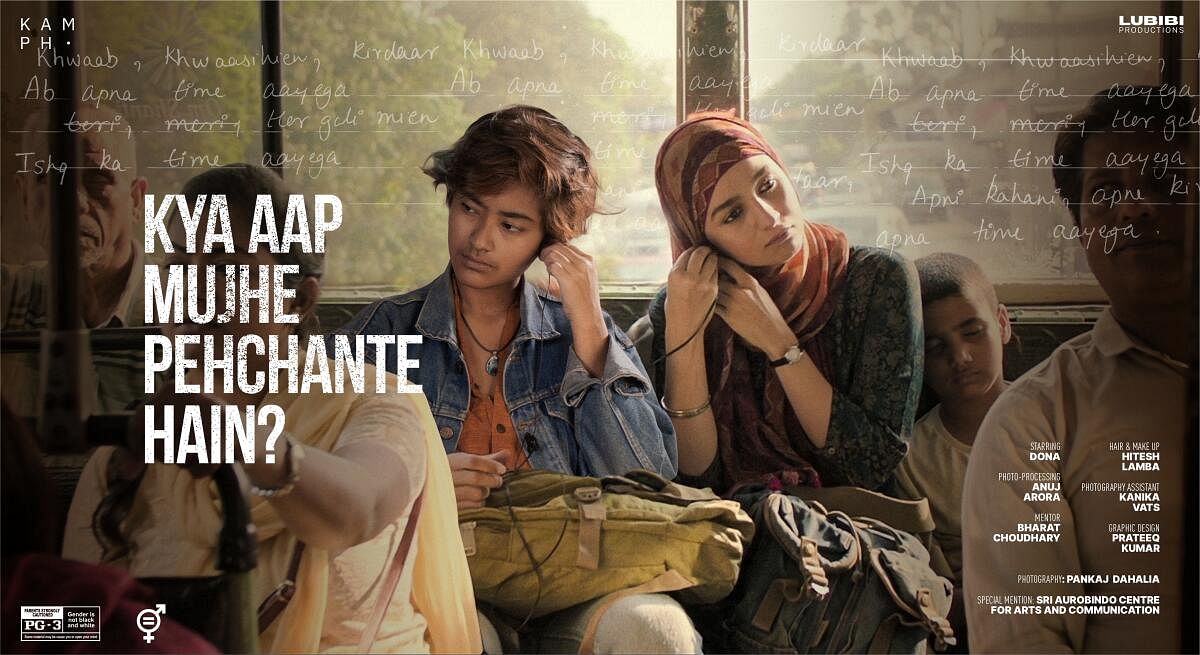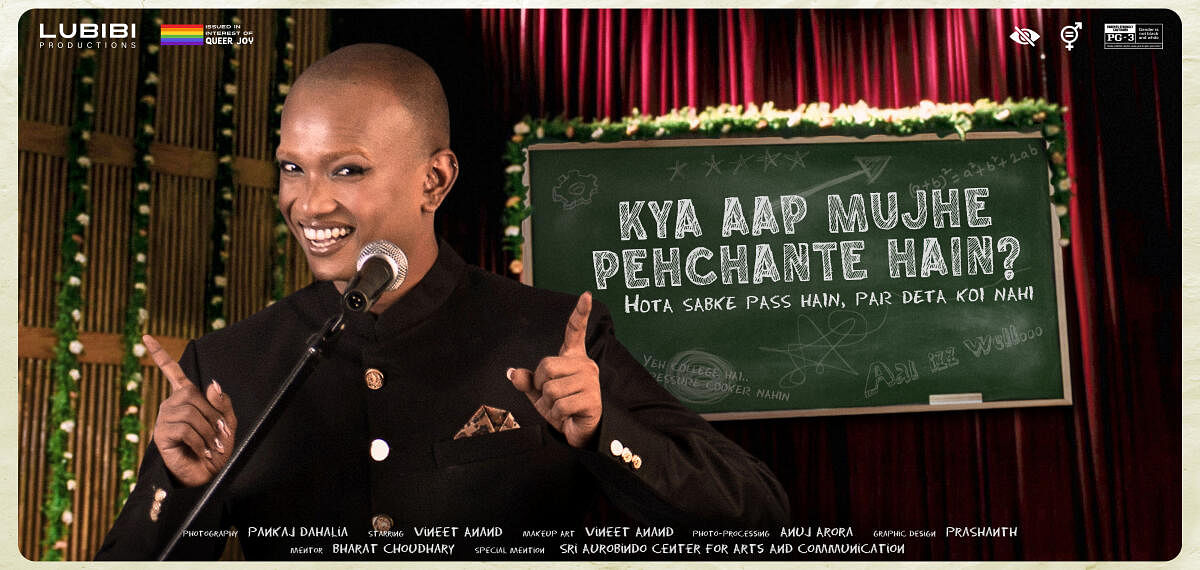

Pankaj Dahaliya, an independent and queer photographer, is pasting a poster on a wall outside South Delhi’s Saket metro station. As his fingers smooth out the poster, two men on a two-wheeler stop by and stare at it. The sequence where Chatur is giving his monologue is one of the most recognisable ones from the movie 3 Idiots. The surprise in this story is that Vineet, a non-binary person, has taken Chatur’s position.
Kya Aap Mujhe Pehchante Hain? (Can you identify me?) is an initiative in public art that brings queerness to the streets. Pankaj and other queers recast and remake well-known characters from Hindi films using a gender-queer perspective. They bring these rewritten stories into the open areas. The artwork confronts the audience in these open areas, prompting them to reflect on their memories of the neighbourhood. The goal of the piece is to elicit various emotions in the audience depending on what they are seeing: agitation, comfort, and confusion. They pause and consider whether they can actually identify the person.
This project showcases nine queer persons, each one of them identifying as differently on a gender spectrum. For instance, Vineet and Mallika both identify as gender non-binary, whereas Priya and Vineet identify as trans men.
Since each of them views, lives, and experiences gender in their own particular way, Pankaj held a series of discussions with them to understand which character each member would want to portray. Everyone’s shared reasons for choosing the roles they did were profound reflections of their wishes and actual experiences.
“Agraj informed me they would only perform characters from old Bollywood films since that’s what they linked to most,” says Pankaj. In the project, Agraj plays a really elegant Helen from the song Karle Pyaar Karle. Rama portrays both Tara from Tamasha and Jordan from Rockstar, informing you that embracing gender fluidity is important.
Dhaliya is not alone in this project. Educational institutions are seeking to close the gap between themselves and the community as they gradually become aware of it. Dhaliya received logistical assistance from the Sri Aurobindo Centre for Arts and Media. Commenting on the project and the importance of such initiatives, Krishna Kant, a PhD scholar and anthropologist from Delhi University adds, “If we take a customary glance at history we will realise that from ancient Greek to contemporary art, queer art has existed for hundreds of centuries and has been portrayed in several forms. I was immediately relieved when I saw the initiative on social media because art has always been a platform for sharing thoughts and expressing unique perspectives.”
According to filmmaker Faraz Arif Ansari, who is also an out and proud member of the community and is known for the films Sisak (2017) and Sheer Qorma (2021), “I feel every attempt made towards opening larger dialogues, especially in the mainstream, for inclusion and acceptance is much needed. Films are a fantastic medium for educating the general public about gender and sexuality, he adds.
He believes that a much larger movement of acceptance and inclusion needs to take place that goes beyond the urban areas and metropolises of India. This is because they feel that most dialogues that are happening, like this art project, are still shaped around the urban diaspora and their understanding. “The Himachal Queer Collective is one of several outstanding nonprofit organisations working at the grassroots level to create new paths. To effectively bring about change, I believe we need more grassroots movements and activists,” says Faraz.